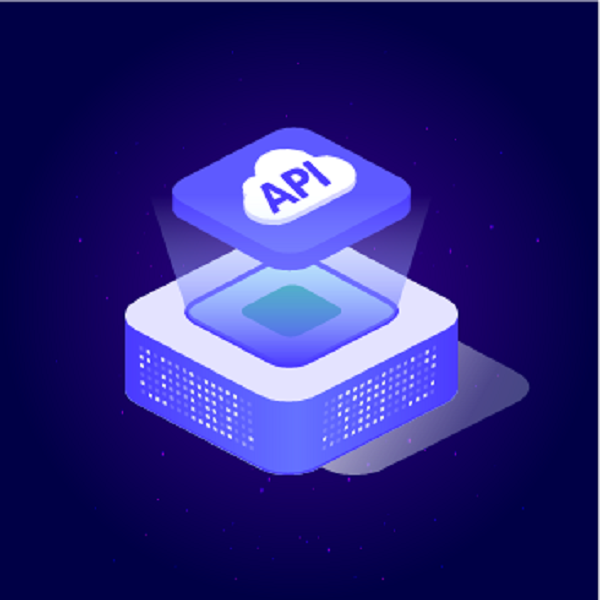Residential Proxies
Allowlisted 200M+ IPs from real ISP. Managed/obtained proxies via dashboard.

Proxies Services
Residential Proxies
Allowlisted 200M+ IPs from real ISP. Managed/obtained proxies via dashboard.
Residential (Socks5) Proxies
Over 200 million real IPs in 190+ locations,
Unlimited Residential Proxies
Unlimited use of IP and Traffic, AI Intelligent Rotating Residential Proxies
Static Residential proxies
Long-lasting dedicated proxy, non-rotating residential proxy
Dedicated Datacenter Proxies
Use stable, fast, and furious 700K+ datacenter IPs worldwide.
Mobile Proxies
Dive into a 10M+ ethically-sourced mobile lP pool with 160+ locations and 700+ ASNs.
Scrapers
Collection of public structured data from all websites
Proxies
Residential Proxies
Allowlisted 200M+ IPs from real ISP. Managed/obtained proxies via dashboard.
Starts from
$0.6/ GB
Residential (Socks5) Proxies
Over 200 million real IPs in 190+ locations,
Starts from
$0.03/ IP
Unlimited Residential Proxies
Unlimited use of IP and Traffic, AI Intelligent Rotating Residential Proxies
Starts from
$1816/ MONTH
Rotating ISP Proxies
ABCProxy's Rotating ISP Proxies guarantee long session time.
Starts from
$0.4/ GB
Static Residential proxies
Long-lasting dedicated proxy, non-rotating residential proxy
Starts from
$4.5/MONTH
Dedicated Datacenter Proxies
Use stable, fast, and furious 700K+ datacenter IPs worldwide.
Starts from
$4.5/MONTH
Mobile Proxies
Allowlisted 200M+ IPs from real ISP. Managed/obtained proxies via dashboard.
Starts from
$1.2/ GB
Scrapers
Web Unblocker
Simulate real user behavior to over-come anti-bot detection
Starts from
$1.2/GB
Serp API
Get real-time search engine data With SERP API
Starts from
$0.3/1K results
Scraping Browser
Scale scraping browsers with built-inunblocking and hosting
Starts from
$2.5/GB
Documentation
All features, parameters, and integration details, backed by code samples in every coding language.
TOOLS
Resources
Addons
ABCProxy Extension for Chrome
Free Chrome proxy manager extension that works with any proxy provider.
ABCProxy Extension for Firefox
Free Firefox proxy manager extension that works with any proxy provider.
Proxy Manager
Manage all proxies using APM interface
Proxy Checker
Free online proxy checker analyzing health, type, and country.
Proxies
AI Developmen
Acquire large-scale multimodal web data for machine learning
Sales & E-commerce
Collect pricing data on every product acrossthe web to get and maintain a competitive advantage
Threat Intelligence
Get real-time data and access multiple geo-locations around the world.
Copyright Infringement Monitoring
Find and gather all the evidence to stop copyright infringements.
Social Media for Marketing
Dominate your industry space on social media with smarter campaigns, anticipate the next big trends
Travel Fare Aggregation
Get real-time data and access multiple geo-locations around the world.
By Use Case
English
繁體中文
Русский
Indonesia
Português
Español
بالعربية


This article explains in detail the core methods of Python parsing HTML tables, explores practical techniques for efficient data extraction, analyzes the key role of proxy IP services in web page collection, and recommends abcproxy professional proxy IP solution.
What is Python HTML table parsing?
HTML tables are a common form of web data storage, usually defined by the <table> tag, and contain rows (<tr>), column headers (<th>), and data cells (<td>). Python, as a powerful tool for data processing, can quickly extract table contents with the help of HTML parsing libraries (such as BeautifulSoup and lxml). For scenarios that require batch collection of web data, such as market research or public opinion monitoring, this technology can significantly improve efficiency. The proxy IP service provided by abcproxy can provide stable network support for such high-frequency data collection tasks.
Why do we need to parse HTML tables?
Web pages often contain structured data, such as price lists, user reviews, or statistical information. Manual copying is not only time-consuming, but also prone to errors. Python automated parsing can achieve:
Batch data crawling: extract multiple pages of table content at one time through scripts.
Dynamic data processing: Clean and transform raw data using regular expressions or XPath.
Integrated analytical workflow: Import extracted data directly into a database or analytical tool such as Pandas.
During this process, frequent visits to the target website may trigger the anti-crawling mechanism, resulting in the IP being blocked. At this time, proxy IP services (such as abcproxy's residential proxy or data center proxy) can circumvent restrictions by switching IP addresses to ensure that the collection task runs continuously.
How to extract HTML table data with Python?
Method 1: Parsing based on BeautifulSoup
BeautifulSoup provides an intuitive API to locate table elements. Use find_all('table') to traverse all tables and extract text row by row and column by column. This method is suitable for simple static pages, but nested tables or dynamically loaded content require additional processing.
Method 2: Use Pandas to read HTML directly
Pandas' read_html() function can automatically parse tables in web pages and return data in DataFrame format. This one-line solution is suitable for rapid prototyping, but its underlying dependency is lxml or html5lib library, which needs to be installed in advance.
Method 3: Combining XPath and lxml library
For complex page structures, XPath syntax can accurately locate the target table. The parsing speed of the lxml library is better than BeautifulSoup, and it is especially suitable for large-scale data processing.
Regardless of the method used, high-frequency requests require proxy IP support. For example, using abcproxy's static ISP proxy can maintain a long-term stable connection and avoid data loss caused by frequent IP changes.
What are some common problems you encounter when parsing HTML tables?
Dynamically loaded content: Some tables are rendered by JavaScript, which requires Selenium or Requests-HTML to simulate browser behavior.
Anti-crawl mechanism: The website may limit the access frequency of a single IP, and requests need to be dispersed through a proxy IP pool (such as abcproxy's unlimited residential proxy).
Inconsistent encoding: Differences in character encoding on different web pages may result in garbled characters, which need to be uniformly processed before parsing.
Chaotic data structure: Merging cells or nested tables requires additional logical processing. You can use Pandas' merge() or custom functions to organize the data.
How does abcproxy help Python HTML table parsing?
In web data collection, the role of proxy IP is far more than hiding the real IP. Take abcproxy as an example:
Residential proxy: simulates real user IP to reduce the probability of being identified as a crawler by the target website. It is suitable for data collection on social media or e-commerce platforms.
Data center proxy: provides high concurrent request capabilities and is suitable for scenarios that require fast capture of large-scale table data.
Static ISP proxy: a long-term stable IP address, suitable for tasks that require continuous monitoring of the same web page for updates (such as price tracking).
By integrating the abcproxy API, the Python script can automatically switch proxy IPs and combine the retry mechanism and request interval control to maximize the success rate of data collection.
How to optimize the efficiency of Python table parsing?
Reduce the number of requests : Prioritize crawling pages containing complete tables to avoid excessive paging.
Parallel processing: Use multithreading or asynchronous libraries such as aiohttp to speed up data acquisition.
Caching mechanism: Locally cache static page content to reduce repeated requests.
Intelligent IP scheduling: Dynamically select the proxy type of abcproxy according to the anti-crawling strategy of the target website. For example, use residential proxy for strictly anti-crawling websites and switch to data center proxy for high concurrency requirements.
Conclusion
Parsing HTML tables with Python is a core skill for data collection, and a stable network environment is the key to success. As a professional proxy IP service provider, abcproxy provides a variety of high-quality proxy IP products, including residential proxies, data center proxies, static ISP proxies, Socks5 proxies, and unlimited residential proxies, suitable for a variety of application scenarios. If you are looking for a reliable proxy IP service, welcome to visit the abcproxy official website for more details.
Featured Posts
Popular Products
Residential Proxies
Allowlisted 200M+ IPs from real ISP. Managed/obtained proxies via dashboard.
Residential (Socks5) Proxies
Over 200 million real IPs in 190+ locations,
Unlimited Residential Proxies
Use stable, fast, and furious 700K+ datacenter IPs worldwide.
Rotating ISP Proxies
ABCProxy's Rotating ISP Proxies guarantee long session time.
Residential (Socks5) Proxies
Long-lasting dedicated proxy, non-rotating residential proxy
Dedicated Datacenter Proxies
Use stable, fast, and furious 700K+ datacenter IPs worldwide.
Web Unblocker
View content as a real user with the help of ABC proxy's dynamic fingerprinting technology.
Related articles

Free and Fast Proxy: Can You Really Have Both
Explore the balance between free and fast proxy services, and learn how abcproxy delivers high-speed, reliable proxy solutions for diverse needs.

How to efficiently parse HTML table data with Python
This article explains in detail the core methods of Python parsing HTML tables, explores practical techniques for efficient data extraction, analyzes the key role of proxy IP services in web page collection, and recommends abcproxy professional proxy IP solution.

JSON parsing technology: principles, optimization and practical guide
This article systematically analyzes the core technical principles of JSON parsing, explores parsing strategies and performance optimization solutions in different scenarios, and provides developers with a complete practical reference.